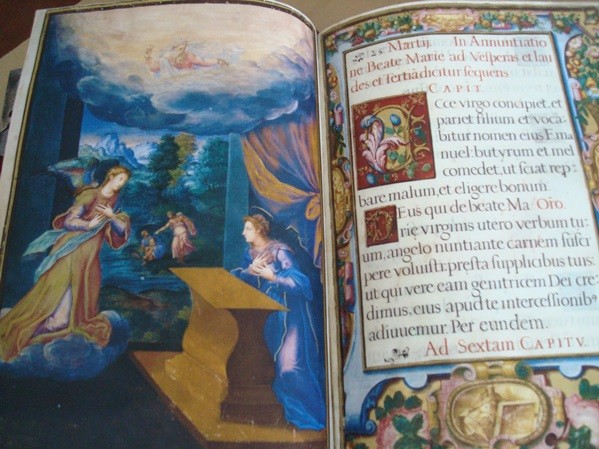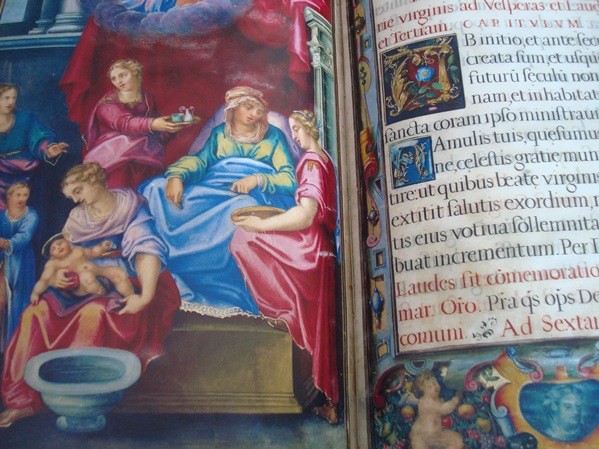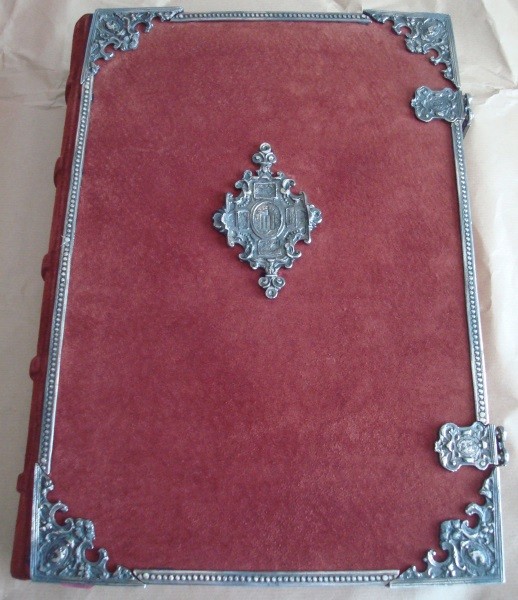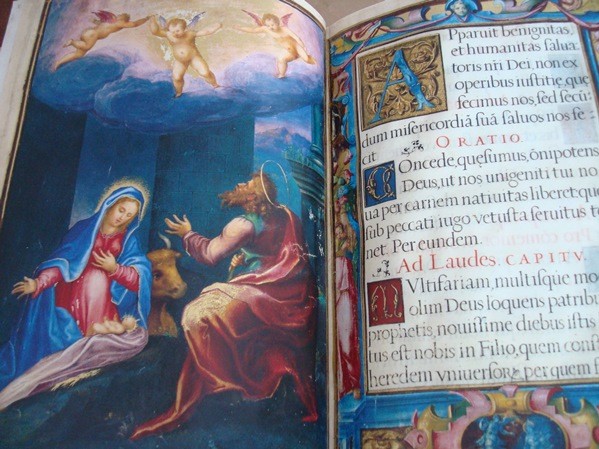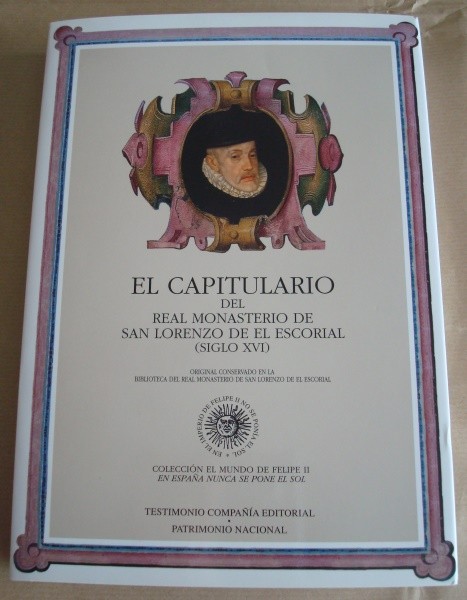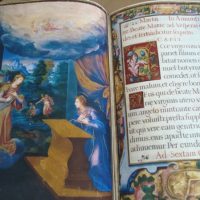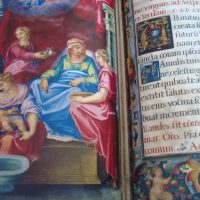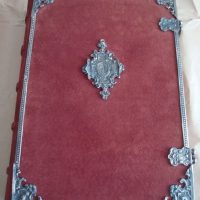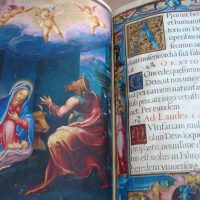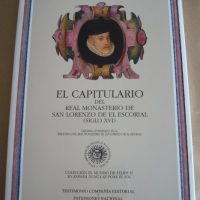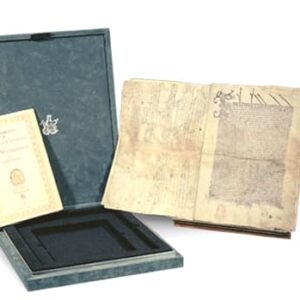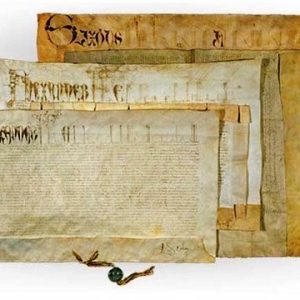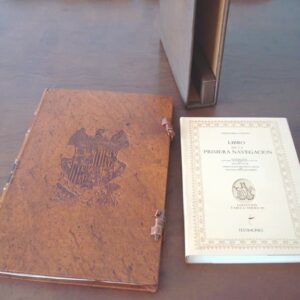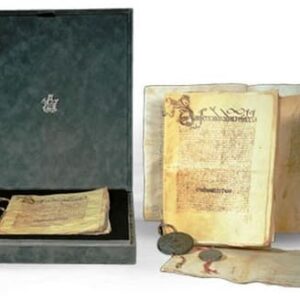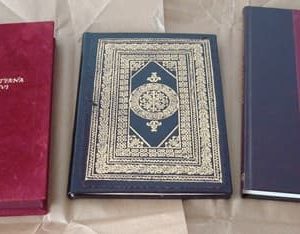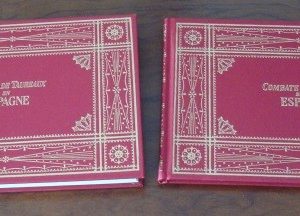Description
Reproduction facsimile of the 16th century Chapter of Philip II, King of Spain and Portugal, wonderful manuscript of 162 folios (23 x 33.5 cm) on high quality parchment, the last five in white. Original preserved in the Royal Library of El Escorial.
Writing, alternating the black and red inks (this for the rubrics), is a humanistic round of good modality, executed with a mastery so perfect that it approaches the regularity of the forms of printing. Capital letters appear regularly in gold in a box with a blue, red or green background.
The initial letter of the great solemnities is of great size and adorned with floral motifs. The normal pages, that is to say, those that do not have large borders, have 18 lines that are included in an imitation wooden frame that gives depth with the conjunction of lines and colors. The binding is in velvet velvet, with silver handles and corners and the same material is the shield of the Escorial that exists in the center.
Excluding the later additions, dating back to the seventeenth century, the structure of the book is as follows:
First. Calendar, which includes columns Numerus Aureus, Sunday Letter, Roman Calendar, Modern System and Santoral.
Second. Chapter proper, preceded by a “Sequuntur Capitula et orationes posite in psalterio”, and in which the course of the liturgical year is followed. In red it indicates the days and the liturgical hours in which they are to read that capitulum and make the pertinent observations.
Third. Preceded by a magnificent miniature of the Holy Burial, there are prayers for the deceased relatives of King Philip II.
What confers to the manuscript the character of codex of great luxury is the presence of numerous miniatures to full flat and borders artistically prepared with architectural motifs, floral, animalistic, etc. Friars Andrés de León and Julián de Fuente el Saz were inspired by the style of the great Julio Clovio.
This character, born in Croatia and died in Italy (1498-1578), was considered one of the greatest miniaturists of his time. In the service of the Venetian family of the Grimani, with one of whose members settled in Rome, he meets Julio Romano, with whom he perfected his art. His models of inspiration were Michelangelo (he was called the Michelangelo of the small) and Raphael, who is still in the palette of colors.
With the mannerist style of Julio Clovio, sometimes with a certain coolness, although technically perfect, the two Jeronimo monks filled the manuscript with precious miniatures. There are 19 full page thumbnails, which are more beautiful.
Extraordinary facsimile edition of 1996, limited to 980 copies, numbered and certified. Format 26.5 x 35.5 cm. Binding in velvet velvet, faithful reproduction of the original with silver hardware, hand sewn, guide tape.
With this copy we give away an exclusive case, open format, personalized with the title of the work, lined in fine velvet and paper cloth, format 25.5 x 36.8 x 8 cm. Given the large amount of hardware in the binding of the book, this case is essential to protect not only the facsimile, but its side books on the shelf of your library.
Complementary study book of 322 pages by Juan José Martín González and José Manuel Ruiz Asencio, Professors of the University of Valladolid. Texts in Spanish. Includes translation of the original texts in Latin into Spanish. Binding in paperback with flaps and with a color illustrated cover. Format 16.5 x 23.7 cm.
Shipping by the buyer, upon request and destination. Ask us without obligation (indicating the reference of the article) any doubt, as well as for any other facsimile or article that you are looking for.




